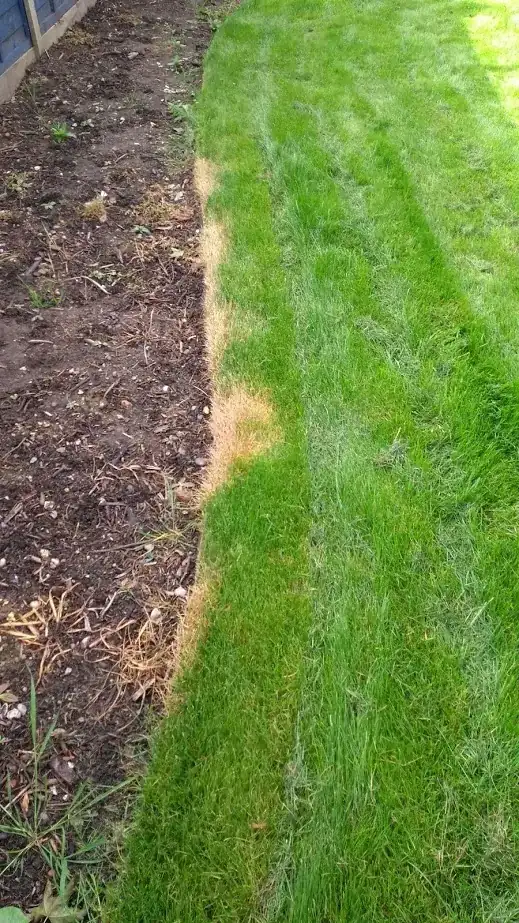Well, firstly, next time you want to weed, do it the old fashioned way, with a garden fork or hoe, and second, it's best to read the instructions on the products you use. As for the grass, I'd do exactly as Stephie suggests, trim away the damaged edges by reshaping the lawn edge, but using a half moon edger. However, where the deeper damage is that goes further into the lawn (assuming you don't want to cut that much off the lawn) cut it in a square shape all round with the half moon edger, reverse and replace it, so that the damaged part is not at the edge. You do this because it's absolutely impossible to seed the edge of the lawn. Now, you've got a choice - before replacing that square of turf, you can break off the bit that's damaged and then reverse and replace, and use topsoil to fill in the gap, and seed it. It's a bit late to seed, but you're in London and with any luck, it might grow before winter sets in. Or, cheat - if you cut off any good bits of lawn when reshaping to get rid of the narrower dead patches, fit in the good bits into the gap where you've broken off the damaged bit, infill with topsoil where the joins are and tamp it down, making sure its level with the rest.
Alternatively, reverse and replace as already said, with the dead part still in place, and if it still looks dead in spring, scurf out the dead grass patch, get a bit of a tilth on top and seed it. Unless you bought something exotic like luxury turf, any standard grass seed mix will do. I just hope whoever supplied and laid the turf didn't do so with plastic mesh in the turf, because that makes it more difficult to do; it can be done, but it's a lot more fiddly.
You will notice the patch while it looks like this, and you will notice as new seed starts growing this or next year, but over time it'll all turn the same shade of green as the rest and you won't notice it at all. For a while though, looking at it and being irritated by it should at least remind you to be more careful next time, it's actually a useful lesson.
EDIT: I've got a query - when you say you sprayed glyphosate 'liberally on the beds', were you spraying specific weed growth, or spraying that and all of the soil in the bed? If you did the latter, it won't do anything other than sit in the soil for a while; glyphosate is not a pre emergent herbicide, and its method of action is to kill through the green, meaning you have to apply it directly to strongly growing, green growth, so if there's nothing green growing, it won't do anything.
